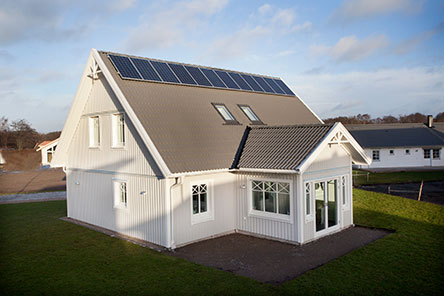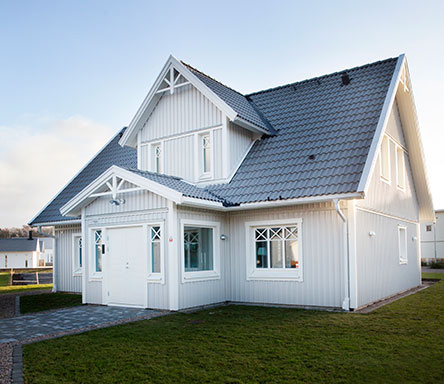NEED4B
A project for tomorrow’s energy efficient buildings.
NEED4B was a EU-funded collaboration project with the intention of stimulating the construction of energy efficient buildings. A total of five countries participated by building demonstration buildings in different climate zones, with different building types and for different purposes.
All the buildings had an overall aim of reducing energy consumption by about 60 per cent compared with today’s regulatory requirements. The buildings were then followed up during a two year period to ensure the objective was achieved. In Sweden, the climate smart Villa Solgläntan has been designed within the framework of NEED4B and constructed partly at RISE Research Institutes of Sweden’s Borås site, and partly at Göingegården in Varberg.
Housing of tomorrow
“Villa Solgläntan was born from an EU-project that involved developing tools so that more people can build and live energy efficiently. Together with RISE Research Institutes of Sweden we were able to contribute with improved building technology and energy efficiency solutions for the housing of tomorrow – both in Sweden and the rest of Europe”.
- Anders Carlsson, Sustainability Manager
Villa Solgläntan
The technology for Villa Solgläntan was developed by Derome together with RISE Research Institutes of Sweden and the house was sold under the brand name A-hus. Great significance was given to energy efficiency, wind and air tightness as well as to create a good indoor climate. Accordingly, the timber house had an extra thick, well-insulated climate shell in order to keep the heated air in and the cold air out. Villa Solgläntan’s energy consumption was calculated to be 20 kWh/m²/year.


4,800 kWh/year
The entrance hall acts as an airlock so that heat does not disappear when you open the entrance door. Villa Solgläntan is also equipped with solar panels on the roof that generate electricity, which is then used for the house’s energy needs. A newly produced house of the same size and with relatively low energy consumption (heating, domestic hot water and electricity) uses about 12,000 kWh/year. Thanks to Villa Solgläntan’s climate shell, in combination with solar panels and the heating system, this is reduced to 4,800 kWh/year.
The two houses constructed in Borås and Varberg differ in appearance, one has a classic and one a modern aspect, while both are equipped with advanced climate-efficient solutions. The first example of the climate smart timber house serves as a research centre for housing of the future. Based on measurements, tools will be produced to enable more people to build and live energy efficiently and to contribute to improved building technology and energy efficient solutions for the housing of tomorrow – both in Sweden and the rest of Europe In order to simulate a true living environment, the robot family Grankvist moved into the house. The family represents a typical average family with representative habits and activities. Through the project we wanted to show how a family, that lives in an energy efficient timber house, can influence energy consumption and the environment. The other house, which was erected in Varberg, is also equipped with instrumentation and today a real family lives here.
